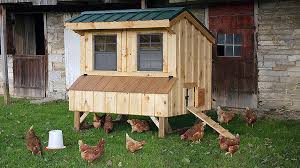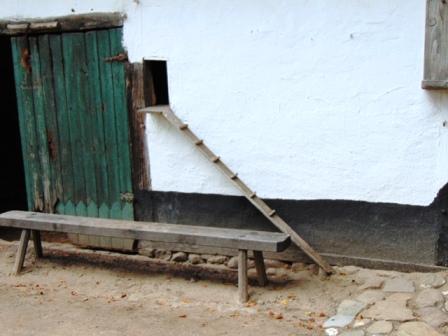Chickens are omnivores that make excellent fertilizer.
Stomach pebbles are the teeth of a chicken, they grind the food in the stomach. (Shells) grit is a source of calcium for chickens. This is necessary for the construction of the egg shell, but also for the maintenance of bones. Let shells of used eggs dry and give them back crumbled.
Put a water bowl high enough so that they can drink, but there comes no dirt in while foraging. In winter it freezes, so you have to give a little, but more often.
A food bowl with one rope hung from the ceiling gives mice no chance, but sparrows do. A feeder that only opens when a chicken steps on the feed plate sure is working fine. They know it quickly. You can also make it yourself of plywood. On You Tube you can find several examples (Auto (matic) Chicken Feeder (s Plans))
https://www.youtube.com/watch?v=zb4otSRqHCQ
Another option not to attract pests (mice..) is to fodder never more than the chickens eat at once.
 In a dry and draft-free pen, you provide some brief dry litter (wood shavings, bark, straw). It's easier to clean it, and gives better manure. Protect the entrance against wind. Put some hay or straw nest of about 30 x 30 cm, 40 cm high, which may be a bit dark.
In a dry and draft-free pen, you provide some brief dry litter (wood shavings, bark, straw). It's easier to clean it, and gives better manure. Protect the entrance against wind. Put some hay or straw nest of about 30 x 30 cm, 40 cm high, which may be a bit dark.
Perches should be secured so they do not tilt or rotate. They are 3 to 5 cm wide and without sharp edges. On 1 meter perch is place for 4 to 5 chickens of a half heavy type. Mandatory them from the first night to sleep inside. Once they have learned to sleep in a tree, you won’t get them out of there anymore. (Advantage: the fox cannot wreak havoc by overkill in your loft.)
Make the coop lockable for when you want to catch them (flea control, treatment, trim, slaughtering).
Check the hens house regularly on red bird mites (a pinhead thick) that are hiding during the day between cracks in the wood, in nests and at the end of the perch. At night, they sucke themselves full of blood. The only solution is to treat the coop.
1 to 3 mm long, brown feather lice live on the skin of the chicken. You see them especially around head and anus.
Scaly leg (Knemidocoptes mutans) nestle under the scales of the legs. Which thicken and become rough and ugly. The mites suffocate if you rub the legs a few times with petroleum jelly.
 Pyrethrum is a powerful neurotoxin for cold-blooded animals and is quite harmless to warm-blooded animals such as humans. It breaks down quickly. Repeat the treatment of coop and animals once more after three days. So you kill mites and lice that in the initial treatment were still in their egg. Pyrethrum is non - selective and thus also kills other insects and arachnids in the loft. It is harmful to bees and fish.
Pyrethrum is a powerful neurotoxin for cold-blooded animals and is quite harmless to warm-blooded animals such as humans. It breaks down quickly. Repeat the treatment of coop and animals once more after three days. So you kill mites and lice that in the initial treatment were still in their egg. Pyrethrum is non - selective and thus also kills other insects and arachnids in the loft. It is harmful to bees and fish.
Keeping chickens in and foxes out can with wire mesh (3 to 4 cm mesh) of at least 1.30 m high. Attach the wire to the outside of the poles so that the foxes and mustelids cannot run inside. Fold the top of the fence outward at an angle of 30°.
Line a 40 cm strip of tiles or concrete slabs. (Or aesthetic: chicken wire, 2 cm below the ground.)
So the fox cannot dig an access tunnel under the fence. Foxes are pretty smart but do not have the idea to begin digging before the tiles.
On images from an infrared camera (2019), I saw how a rat grabbed a chicken in the dark: just like a weasel, straight to the throat.
If you want to maintain a green bottom then you need 10 to 25 m2 per animal. An old turf is more resistant to the scratching. Divide the field into two pieces that they can use interchangeably. Or protect some grass areas by imposing prunings on it. Or make a movable enclosure (and stable). That you can put on garden plots after harvest. There they are great at catching insects, which they convert for you in eggs. Easily and efficiently.
Two chickens flight for a cock. "Not so fast, he is already a bit older!"
